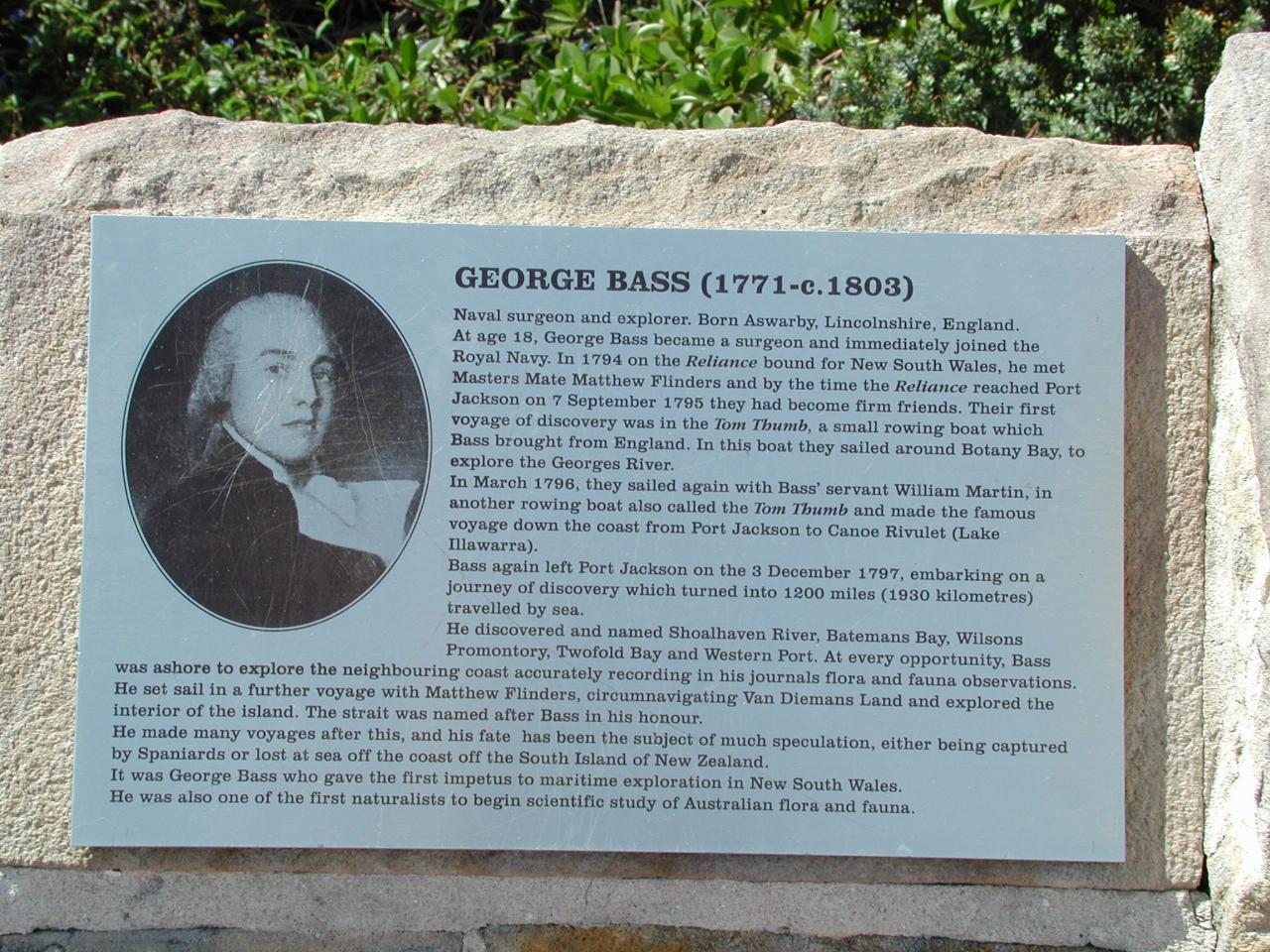

Naval surgeon and explorer. Borm Aswarby, Lincolnshire, England. At age 18, George Bass became a surgeon and immediately joined the Royal Navy. In 1794 on the Reliance bound for New South Wales, he met Masters Mate Matthew Flinders and by the time the Reliance reached Port Jackson on 7 September 1795 they had become firm friends. Their first voyage of discovery was in the Tom Thumb, a small rowing boat which Bass brought from England. In this boat they sailed around Botany Bay, to explore Georges River.
In March 1796, they sailed again with Bass' servant William Martin, in another rowing boat also called the Tom Thumb and made the famous voyage down the coast from Port Jackson to Canoe Rivulet (Lake Illawarra).
Bass again left Port Jackson on the 3 December 1797, embarking on a journey of discovery which turned into 1200 miles (1930 kilometres) travelled by sea.
He discovered and named Shoalhaven River, Batemans Bay, Wilsons Promontory, Twofold Bay and Western Port. At every opportunity, Bass was ashore to explore the neighbouring coast accurately recording in his journals flora and fauna observations. He set sail in a further voyage with Matthew Flinders, circumnavigating Van Diemans Land and explored the interior of the island. The strait was named after Bass in his honour.
He made many voyages after this, and his fate has been the subject of much speculation, either being captured by Spaniards or lost at sea off the coast of the South Island of New Zealand.
It was George Bass who gave the first impetus to maritime exploration in New South Wales. He was also one of the first naturalists to begin scientific study of Australian flora and fauna.